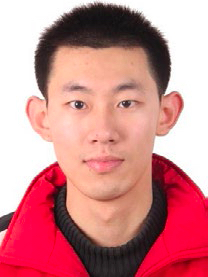The efficient and effective use of the world-leading synchrotron facilities for catalytic research is one of the major successes and driving force of the Catalysis Community, especially in the area of the use of X-ray Absorption Spectroscopy (XAS) and Neutron Scattering. However, the increasing fruitful collaborations are pushing the capacity of these facilities and requiring improved sample environments to push the boundaries of in situ/operando measurements. Therefore, we are developing a high throughput XAS reactor system with improved sample environments for catalysis at UK synchrotron central facilities under realistic operating conditions to be used with X-ray, neutron, and conventional spectroscopic techniques. The high throughput reactor system designed to simultaneously operate 4 reactors for in-situ/operando measurement, will be commissioned firstly by testing various VMo/SiO2 catalysts for propane oxidative dehydrogenation as a proof of concept. The results of operando XAS tests can reveal a restructuring changes of vanadium species leading to a different degree of dispersion of molecular vanadium species on the silica support. Moreover, the results could show the new high throughput reactor system significantly improved the repeatability and efficiency for the operando measurement.
Shaojun Xu (Cardiff), Emma K Gibson (Glasgow), Richard C Catlow (UCL/Cardiff)
Watch a recording of the talk below:
Biography

Dr Shaojun Xu did his PhD as Marie Skłodowska-Curie Early Stage Research Fellow at the University of Manchester (UoM) under the supervision of Prof Philip Martin and Prof Christopher Whitehead. His project was concerned with understanding the mechanism of plasma-catalysis for C1 compounds using in situ spectroscopic methods. His work in Plasma-Catalysis was recognised by the International Plasma Chemistry Society (IPCS) and he was awarded the IPCS scholarship. In September 2017, he joined Prof Martin Schröder’s group in the School of Chemistry, University of Manchester as a postdoctoral research associate. He was interested in the potential of a genuine utilisation of the pore structures and porosity of MOFs in heterogeneous catalysis. Since September 2019, he joined Prof Richard Catlow FLSW FRS’s group at Cardiff University and the UK Catalysis Hub, and also be part of the research groups of Dr E. Gibson, Dr I. Silverwood, Dr P Wells, Dr D. Gianolio, Prof A. Beale, Prof C. Hardacre and Dr T. Young, developing in situ and operando methods for establishing structure-function relationships in all areas of catalysis, both heterogeneous and homogeneous. He has particular interests to uncover the mechanistic details of chemical reactions that liberate energy and harness chemical potential, focusing on the innovation of reaction process and development of operando characterisation methods.




